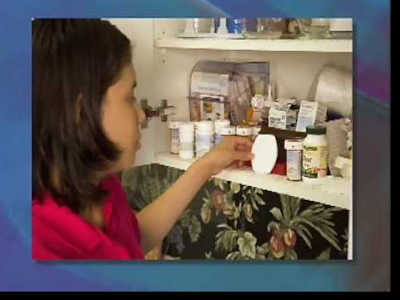A vaginal ring can prevent hiv
The methods used to prevent the spread of HIV until now have always been barrier contraceptives , such as condoms or the diaphragm (female condom). Both methods prevented the couple's sexual fluids from maintaining contact.
The latest research seems to indicate that a vaginal ring or ring can also be used to prevent transmission of the HIV virus. This ring releases a microbicide that acts against the immunodeficiency virus.
Below you have an index with all the points that we will discuss in this article.
IndexEfficacy of the vaginal ring
There are two studies that prove the effectiveness of this ring, both are made in Africa. Since 2001, this ring with antiretroviral has been administered to thousands of African women. With these clinical analyzes a reduction in infection of up to 60% has been achieved, but the researchers hope to improve the results in a short period of time.
HIV infectionAvoid sexually transmitted diseases
This latest study published in the journal Science of Translational Medicine concludes: "The results confirm the use of vaginal rings as an effective way to prevent the transmission of HIV through the administration of antiretrovirals" as explained by Naomi Rutenberg, of the HIV AND AIDS.
The intravaginal rings are loaded with the microbicide MIV-150, which alters an envelope that the virus needs to be able to make copies of itself, avoiding the contagion with this virus. The hoop is the perfect tool because it is more effective than microbicidal gels, it is also not necessary for women to remember to use the product and it is discreet.
The aim of this study aims to increase, in addition to preventing the spread of HIV will also include other sexually transmitted diseases, such as herpes or human papilloma virus.
Avoid sexually transmitted diseases. If you share, you help usWe make a great editorial effort. Sharing this article helps us and motivates us to continue our work.
72
Authors and collaborators
Cristina Mestre EmbriólogaLicenciada in Biological Sciences, Genetics and Human Reproduction by the University of Valencia (UV). Master's Degree in Biotechnology of Human Reproduction Assisted by the UV with the Valencian Institute of Infertility (IVI). Embriologist in IVI Barcelona. More informationFollow us in our networksAll about assisted reproduction in our channels.
31,898 3,904 14,878.autor_box {background-color: #ececec; padding: 20px 30px; font-size: 14px;} .author_name {font-size: 18px; font-weight: bold; margin-bottom: 5px;} .author_title {font-weight: bold;} .author_text {margin-bottom: 10px;} .autor_box_izq {display: inline-block; vertical-align: middle; width: 15%;}. author_box_dcha {display: inline-block; vertical-align: middle; width: 85%;} .author_box_dcha_sep {margin: 0 0 10px 30px} .author_box_descripcion {margin-top: 0px; text-align: right;} .autor_box_desc_izq {display: inline-block; vertical-align: middle; width: 15%;}. author_box_desc_dcha {display: inline-block; vertical-align: middle; width: 85%;}. author_box_desc_dcha_sep {margin: 0 0 10px 30px} .autor_box: not (: last-child) {margin-bottom: 20px} @media screen and (max-width: 470px) {.autor_box {font-size: 16px; padding: 20px;} .author_name {font-size: 16px; margin -bottom: 3px;} .autor_box_izq {width: 20%;} .autor_box_dcha {width: 80%;} .autor_box_dcha_sep {margin: 0 0 10px 20px} .autor_box_descripcion {margin-top: 10px} .autor_box_descripcion_sep {width: 100% } .autor_box_desc_izq {display: none;} .autor_box_desc_dcha {width: 100%} .autor_box_desc_dcha_sep {margin-left: 0;}}
Comments
Post a Comment